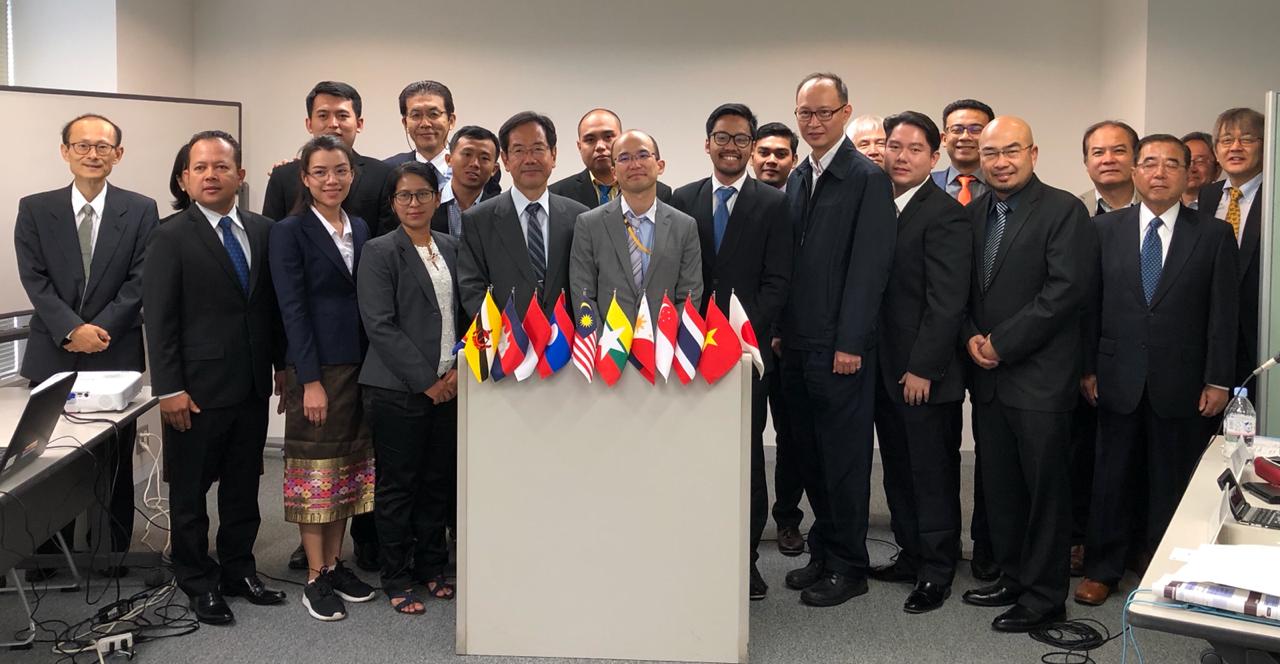Menu
 The ASEAN Member States (AMS) agreed to add Zero Energy Building (ZEB) Ready as a new subcategory of the ASEAN Energy Awards under the Energy Efficient Building category, starting 2019. Representatives nominated by the ASEAN Energy Efficiency and Conservation Sub-sector Network (EE&C SSN) convened in Tokyo, Japan, to learn about the best practices of ZEB from Japan and to establish the evaluation criteria for this new category during the Energy Conservation Workshop under ASEAN-Japan Energy Efficiency Partnership (ECAP) 17.
The ASEAN Member States (AMS) agreed to add Zero Energy Building (ZEB) Ready as a new subcategory of the ASEAN Energy Awards under the Energy Efficient Building category, starting 2019. Representatives nominated by the ASEAN Energy Efficiency and Conservation Sub-sector Network (EE&C SSN) convened in Tokyo, Japan, to learn about the best practices of ZEB from Japan and to establish the evaluation criteria for this new category during the Energy Conservation Workshop under ASEAN-Japan Energy Efficiency Partnership (ECAP) 17.
The ECAP 17 workshop was jointly organised by Energy Conservation Centre Japan (ECCJ) and ASEAN Centre for Energy (ACE) on 5-9 November 2018 in Tokyo, Japan. This five-day workshop consisted of lectures, site visit, knowledge exchange between AMS and Japan, and roundtable discussion.

As mentioned by the ECCJ, ZEBs are defined as buildings that utilise advanced architectural designs aiming to realise substantial energy savings by reducing the energy loads, positively utilising natural energy by applying passive technologies, and introducing high efficiency equipment and systems. Additionally, it aims to achieve the highest degree of energy independence and reduce the annual primary energy balance to zero by introducing renewable energy. The ZEB can be achieved through step-by-step approach of EE measures in buildings.

The workshop recommended several action plans to raise AMS awareness on ZEB, such as seminars and case studies exchanges. According to the 5th ASEAN Energy Outlook by ACE, the commercial and residential sectors account for 30 percent of ASEAN’s total final energy consumption. Consumption by these sectors are expected to grow further due to an increase in urbanisation and built infrastructures. In the ASEAN Plan of Action for Energy Cooperation 2016 – 2025, AMS are committed achieve 20% energy intensity reduction in 2020. The addition of ZEB as a category in ASEAN Energy Awards starting next year also aims to accelerate the movement of ZEB implementation in AMS in an effort to reduce even more energy intensity in the region. (RAP. Featured photo credit: ECCJ)
